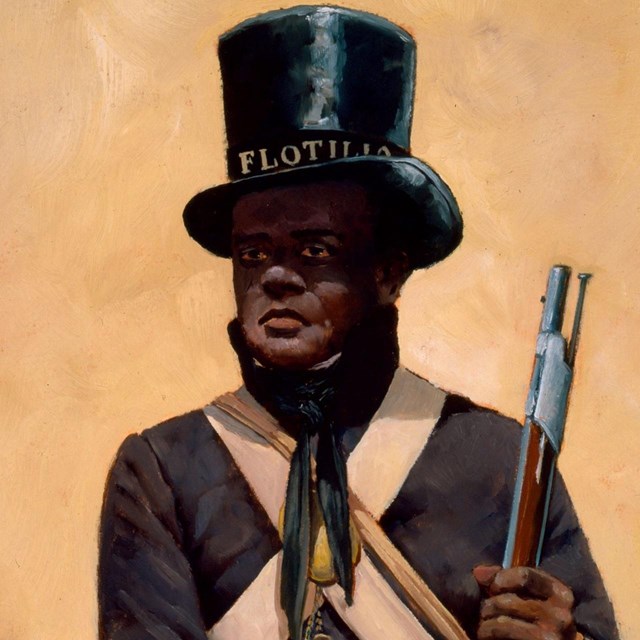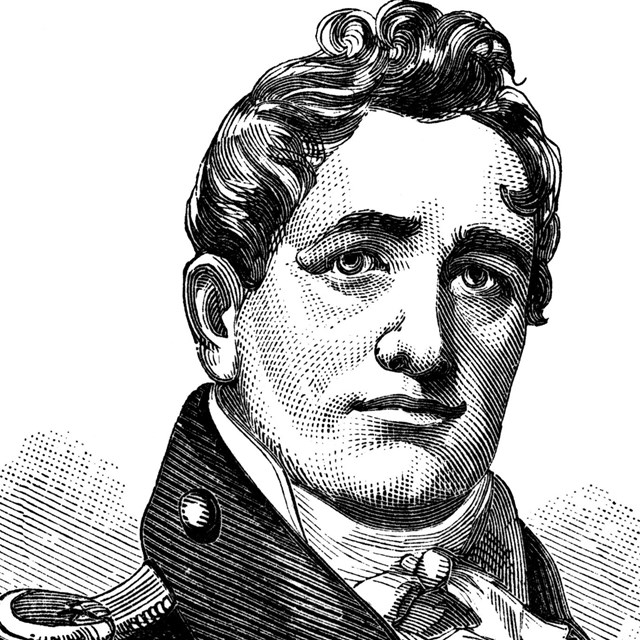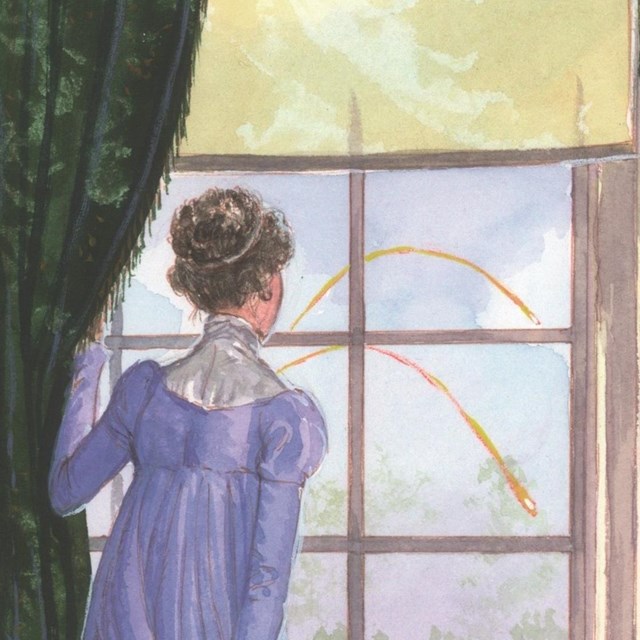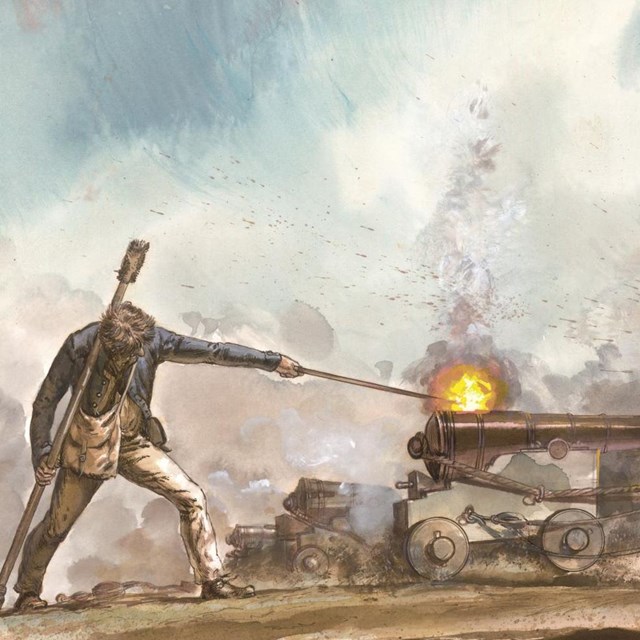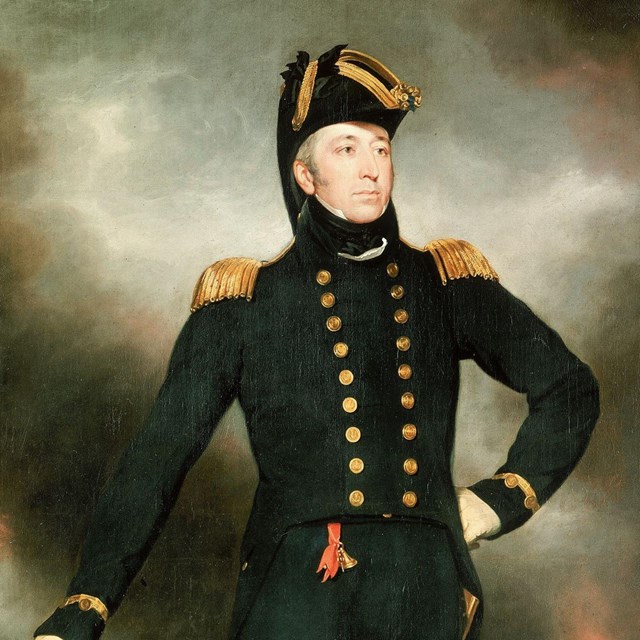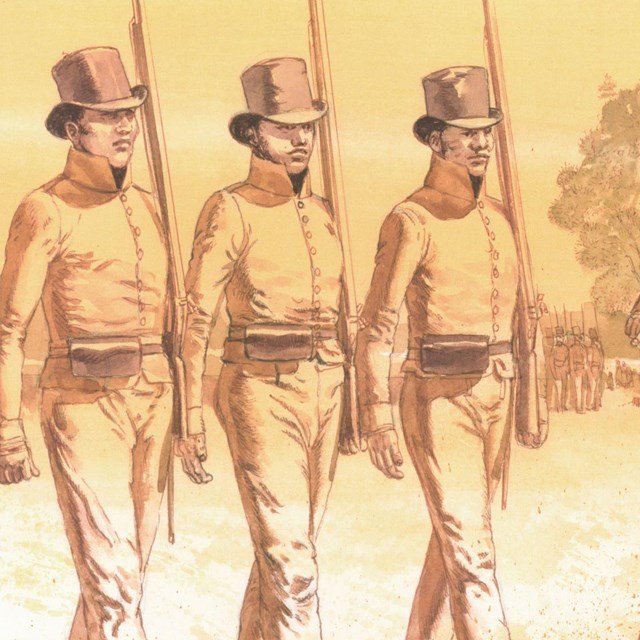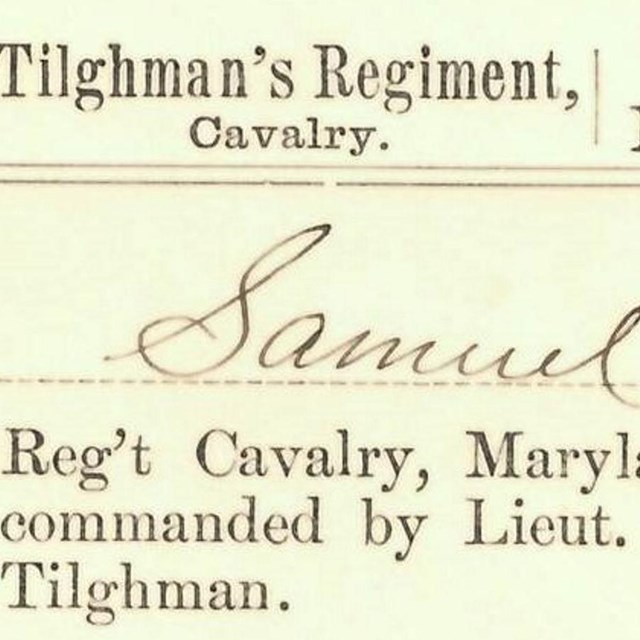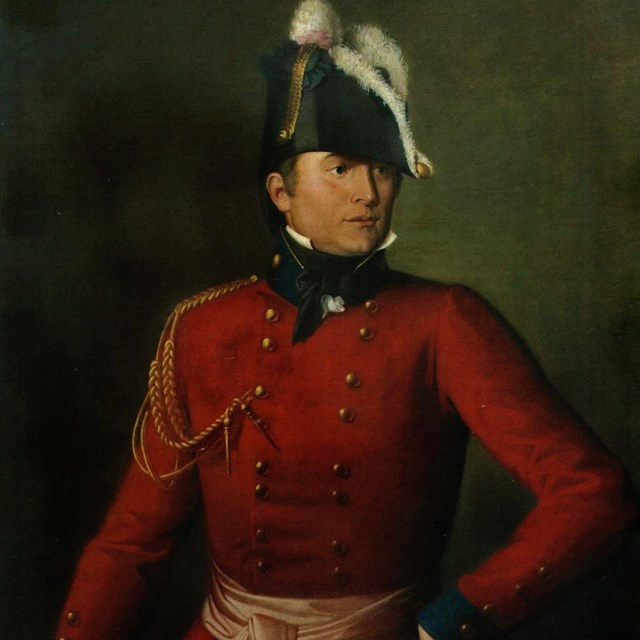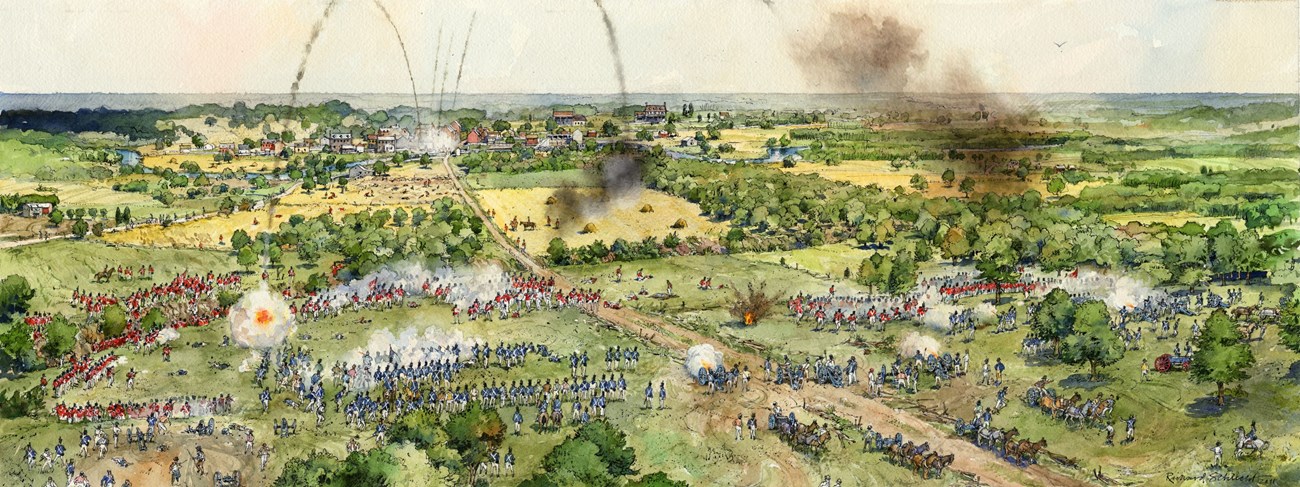
As British ships and land troops moved northward from the landing at Benedict, Maryland, they kept the Americans guessing. Would the target be Baltimore or Washington? By the time it was clear that the invasion force was heading to Washington, the Americans had little time to prepare. They hastily established three lines of defense near the port town of Bladensburg, where the British would cross the Eastern Branch of the Potomac River, known today as the Anacostia. The opposing troops clashed just west of Bladensburg on August 24, 1814, in three hours of intense fighting. Though superior in number, most of the American defensive forces were poorly trained, ill-equipped, and positioned so the lines could not support one another. They were no match for the seasoned British army. The British stormed the bridge and, after one failed attempt, crossed the river and pushed the Americans back. The first defensive line folded into the second, and soon confusion and panic swept through the American ranks. Only the third defensive line made a heroic stand. There, Commodore Joshua Barney, along with about 400 flotillamen, 114 US Marines and militiamen, held off the British advance until the defenders were outflanked and their commander, Barney, was wounded. President James Madison and several cabinet members were on the field of battle that day. Seeing the start of an American rout, they beat a hasty retreat to Washington, sending word ahead to First Lady Dolley Madison and others to save what possessions they could and flee. That night the British victors occupied the nation’s capital and destroyed most of the public buildings. The defeat at Bladensburg and the enemy occupation of the capital made August 24 the darkest day of the war for the United States. People
Visit Trail Sites in Bladensburg |
Last updated: February 16, 2024

